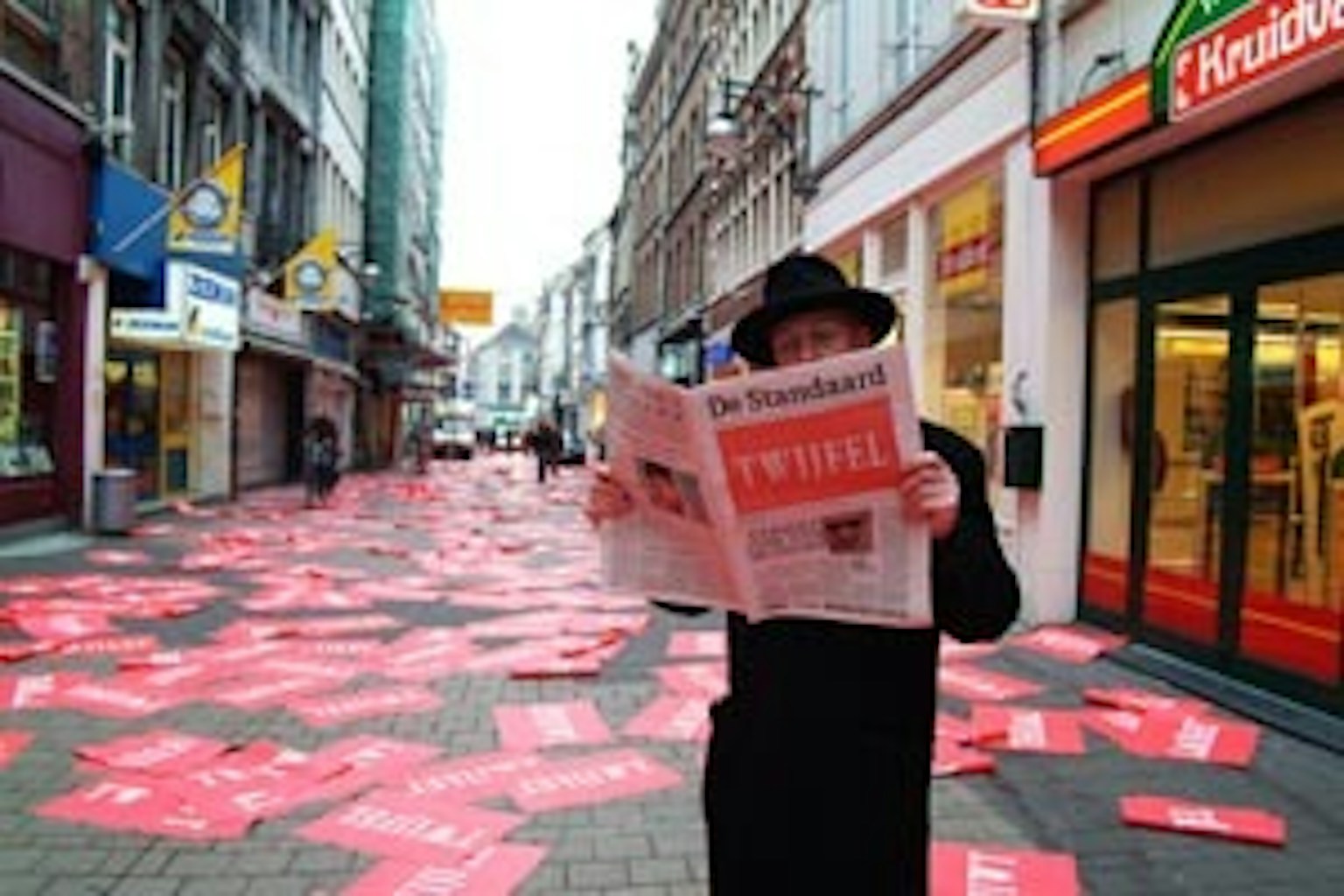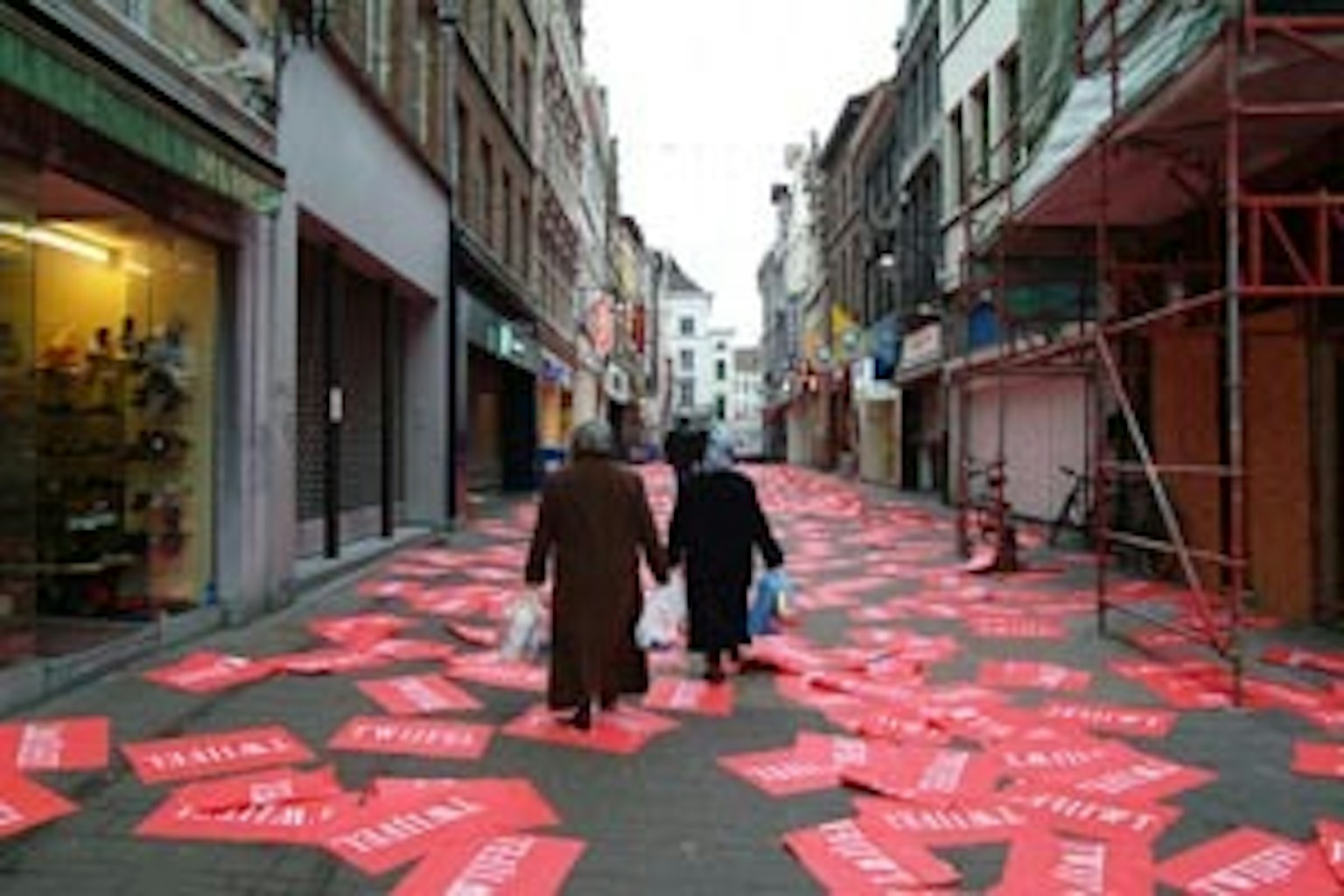For many years Erick Beltrán has studied the relationship between word and image, text and symbol, and language and meaning, in the daily media.
A part of his work is made up of minimal but alienating interventions in newspapers, which question the stereotypical conservative composition of these media without actually detracting from them in any way. In fact Beltràn sees newspapers as the instruction books for our everyday lives, or the printed version of what is considered important to our social reality.
“Construction of a discourse, is construction of reality” (Interview Erick Beltrán, SMAK, 11-02-2005) Erick Beltrán (b. 1974, Mexico) is an artist with a pronounced fascination for the selection of words and images and their use in media and graphic work. It is not only the selection itself that captivates him, but also the social, economic, cultural, ethical and political motives of their producers and distributors. Betran puts the notion of the ‘edition’ at the heart of the conceptual basis of his work, which consists of an amalgam of a wide variety of media, from installations, through printing, to minor artistic interventions. He does not use the word ‘edition’ in its purely reproductional sense, but allots it a much broader significance. He sees an ‘edition’ rather as a sort of hierarchical selection system that is intended to distil a meaningful construction out of the abundance of social, societal and political impulses. He sees this structure as almost universally applicable: for example, it is used to structure individual human thoughts, but equally by more institutional structures such as the printed media, which proclaim ‘their’ truth by means of this idea. On the basis of this concept Erick Beltran structures his images, in which he usually makes use of reproducible printed media such as posters, newspapers, books and suchlike. The main question here is ‘Why do we select particular images (rather than others)?’ According to Beltran, there are two answers to this question. On the one hand they are chosen with regard to their concrete form, such as newspapers, books and catalogues.
On the other hand the choice is determined by economic, social, cultural or political objectives. In his plastic work Beltran tries to take up a position exactly between these two selection structures. What he means by this is that in his plastic work he intends to infiltrate into the ‘normal structure’ of image selection precisely in order to block the social, political or societal objectives on which basis one selects images. In this way he wants to show that the use of these selection structures can lead to new, unforeseen possibilities. So he does not intend to attack them for their structure (especially power structure) itself. For his exhibition at the SMAK, entitled Punch Drunk – a boxing term that refers to a state of confusion after taking repeated punches – Beltran created three projects that can be described as ‘small acupuncture-like gestures in public places’. The first is a project in collaboration with the Newspaper De Standaard, called Standaard 19-02-2005. On this date Beltran will intervene in the newspaper in such a way that all the photos will be replaced by the same picture. In this way he will obstruct the whole hierarchically structured image selection characteristic of such media. After all, by choosing specific images for the front page, the cultural or political pages of a newspaper, this media strictly determines our perception of reality. With his levelling of this hierarchy of images, Beltran gives us back for one day the freedom to select from reality without value judgments. In the second part of the Punch Drunk exhibition, Beltran uses the city centre of Ghent itself as a medium. He will ‘occupy’ the centre for one weekend, with a thousand posters on which the word ‘doubt’ is printed. He thereby refers on the one hand to his abundant use of reproduction media, with which he this time tries to reach people at random. The passers-by who read these messages can after all no longer be classified as readers of a particular newspaper, but have much more diverse social, cultural, political and societal backgrounds. Here too Beltran levels the mechanism of image selection by always using the same word on the same poster, but at the same time is more oriented towards the ideologies and objectives of the spectators who guide the interpretation of these images. The third part of the project takes place in the SMAK itself. In one of the museum’s small gallery rooms Beltran presents a modest installation-cum-archive, made up entirely of images which he himself selected. These images are part of the various artistic acts Beltran has undertaken, and also offer the viewer a sort of manual for their own individual image selection. So in this case the hierarchy of image selection is placed with the artist, but within this hierarchy the viewer is nevertheless give his own personal freedom to choose. Erick Beltran does not by means of these interventions in any way intend to ‘disrupt’ the existing structure – the newspaper, the city or the museum room, but would like, rather, to make open use of these ‘media’ to create other possibilities of perception. The conversation that arises around this offer of an alternative selection from reality is thereby of primary importance.






